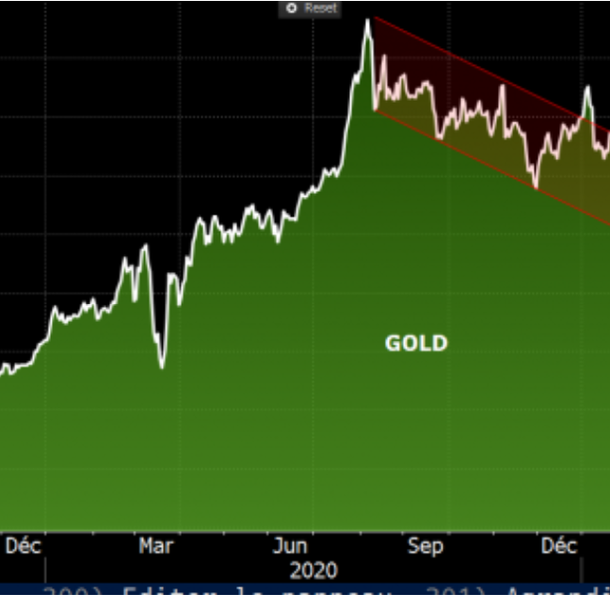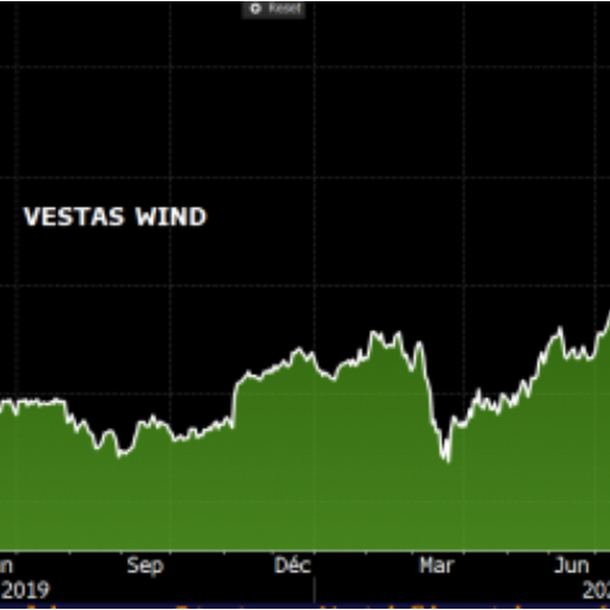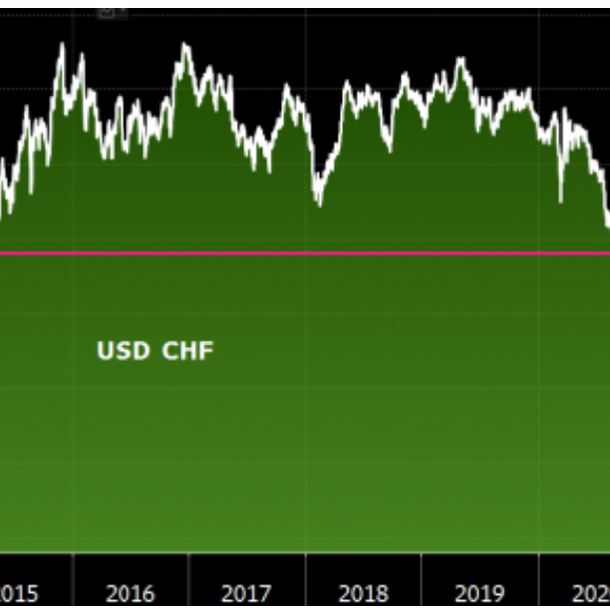|
Monday December 7 | Weekly market update |
 | After four consecutive weeks of strong growth on the back of hope for vaccines against Covid-19, financial markets took a pause, caught up between uncertainties about Brexit and the second wave that should harm the economy in the fourth quarter. Despite concerns about vaccine distribution, with Pfizer reporting problems, indices held up well, with the prospect of a stimulus plan in the United States and a further move by central bankers. |
| Indexes Over the past week, in Asia, the Nikkei gained 0.4% while the Hang Seng lost 0.4% and the Shanghai Composite gained 1%. In Europe, the CAC40 recorded a weekly loss of 0.1%, the Dax lost 0.5% while the Footsie gained 2.6%, as the end of the transition period approaches. For the peripheral countries of the euro zone, Italy fell by 0.9%, Portugal rose by 0.5% and Spain by 0.8%. In the U.S., indices once again set new absolute records, supported by hopes of monetary and budgetary support and the weakness of the greenback. |
| Commodities Last week, oil prices continue their rebound that began in early November, supported by the agreement between OPEC+ members, who reached a consensus on a slight reduction in production quotas from January 1, 2021. Approximately 500,000 additional barrels will arrive on the market each day, which is much less than the 1.9 million barrels per day initially planned. The price of Brent crude oil is close to the symbolic USD 50 bar, while the American reference is trading around USD 45.7. After three weeks of correction, precious metals are back on the rise again. The gold metal achieves almost a faultless performance on the past weekly sequence, largely helped by the fall of the dollar. Gold also settles above USD 1800 to trade precisely at USD 1830 per ounce (see chart). Silver, on the other hand, has not recorded any negative sessions over the last five days and is advancing at USD 23.8. As for base metals, they finished the week in scattered order. While nickel and tin paused, copper and aluminum continued their ascent. Gold rebounds on the lower bound of a downtrend channel  |
| Equities markets Vestas Wind Systems is the world's leading manufacturer of wind turbines. This Danish company is taking advantage of the current context to be among this year's big winners. Indeed, many European countries are actually embarking on the energy transition. The United Kingdom plans to build the world's largest wind farm after announcing the end of internal combustion vehicles by 2030, while Denmark will stop its oil production in the North Sea. These government measures are a real opportunity for Vestas, which sees its share price increase by 77.5% over the year 2020. The Danish group is present in nearly 82 countries and stands out for its increased activity in the United States, with 28% of its installations. In total, the Danish OMX-listed company has installed more than 120 GW of wind power worldwide thanks to its 2 MW and 4 MW platforms. This solid position in a promising market allows the group to see its turnover increase year on year. 1.8% in 2018 and 19.8% in 2019 while analysts expect a 20.8% increase in 2020. The company evolves at the end of the year on its highs, with a peak at DKK 1275 last Tuesday. Vestas: a flawless trajectory  |
| Bond market The Federal Reserve has responded strongly to the economic fallout from the coronavirus pandemic and the prospect of a divided government next year could put even more weight on the Fed's shoulders. In the meantime, the dollar is weakening but the 10-year U.S. yield is stabilizing at 0.91%. In Europe, the calm is confirmed with rates unchanged over a week. The Bund is at -0.56% and the French OAT at -0.32%. The Mediterranean countries are approaching the symbolic zero line. Portugal pays its debt with a small 0.02%, as does Spain with a rate of 0.06%. Greece (0.60%) and Italy (0.50%) are taking full advantage of this sustainable situation of rates administered by the ECB to see the cost of their debt decrease from week to week. |
| Forex market Optimism generated by a likely U.S. stimulus package, bets on a successful vaccine rollout, and China's economic rebound are driving the currency market. One winner, the yuan, stands out once again, setting a new record at CNY 6.54. On the other hand, the dollar is losing as the world's main reserve currency appears by traders to be susceptible to a bearish cycle. The U.S. currency therefore remains under pressure as positive signs for a global recovery become clearer. In Europe, the single currency is benefiting from risk appetite and is soaring to its highest level since spring 2018, approaching USD 1.22. The US dollar has been under pressure since the beginning of the year. The euro is also improving against safe-haven currencies. The EUR/JPY pair is trading with a 250 point gain over the week at JPY 123.50, while the Swiss Franc also fell against the European currency at CHF 1.09. Meanwhile, the British pound continued to issue erratic spreads after the British Foreign Secretary indicated progress in negotiations to reach an agreement on Brexit. The cable is trading on a 1.32 USD basis. The highlight comes from the USD/CHF parity which is trading at a 5-year low (the period when the SNB had let the Swiss franc soar). It takes 0.89 Swiss Franc to buy one dollar (see chart). In the southern hemisphere, pro-cyclical currencies such as AUD and NZD are moving in a coordinated manner. The Australian dollar is trading at USD 0.74, a two-year high, as is the kiwi, which is trading on a USD 0.71 basis. Consolidation of USD/CHF, on a 5-year low  |
| Economic data Both manufacturing and services activity accelerated once again in China, surpassing expectations for both the official and Caixin indices. The PMI manufacturing and services indices came out at 52.1 and 56.4 respectively (54.9 and 57.8 for the Caixin indices). In Germany, the CPI index declined by 0.8% (consensus -0.7% and +0.1% last month) but retail sales rebounded by 2.6% (consensus 1.3%) and industrial orders by 2.9%. For the euro zone, the manufacturing and services PMI indices were slightly better than expected (53.8 and 41.7). Nevertheless, services activity continued to contract, with the index remaining well below the 50 threshold. The CPI index fell by 0.3% while the PPI index remained the same as the previous month at +0.4%, and the unemployment rate remained at 8.4%. Retail sales, on the other hand, exceeded expectations at +1.5% (0.7% expected and -1.7% last month). In the United States, many figures disappointed, reinforcing the feeling that the Fed should act more to support the economy. Pending home sales fell by 1.1%, with the Chicago PMI index missing the consensus at 58.2. The ISM manufacturing index fell to 57.5 (59.3 previously) and the ISM services index to 55.9 (56.6 last month). Regarding employment data, the ADP survey reported only 307K private sector job creation, where the market expected 433K (404K last month). The monthly report highlighted a better than expected unemployment rate of 6.7% (6.9% previously), but with only 245K jobs created (consensus 480K) and hourly wages up 0.3%. The trade balance improved to -63.1B and industrial orders rose by 1% (consensus +0.8%). |
| Momentum slows down but doesn't fade After a historic month of November, markets remain optimistic. Index declines are defined by mini-retractions with no impact on the primary, largely upward trend. This form of creeping consolidation is carried out through investments in cyclical stocks, proving the willingness of players to perpetuate risk taking. Thanks to interventions of central banks, the environment of administered rates favors this trend, as if monetary institutions were acting to keep the markets in a state of levitation. Don't fight the Fed! |

 By
By 
















